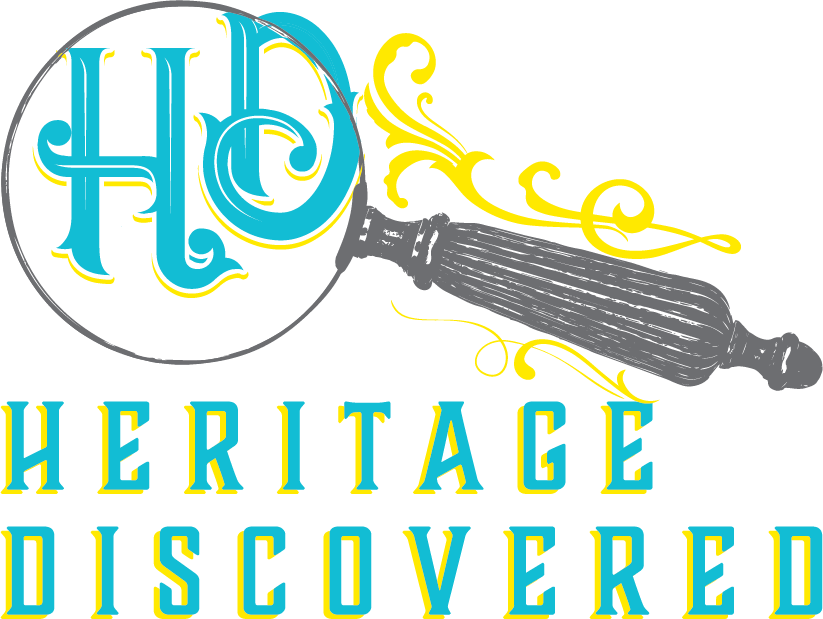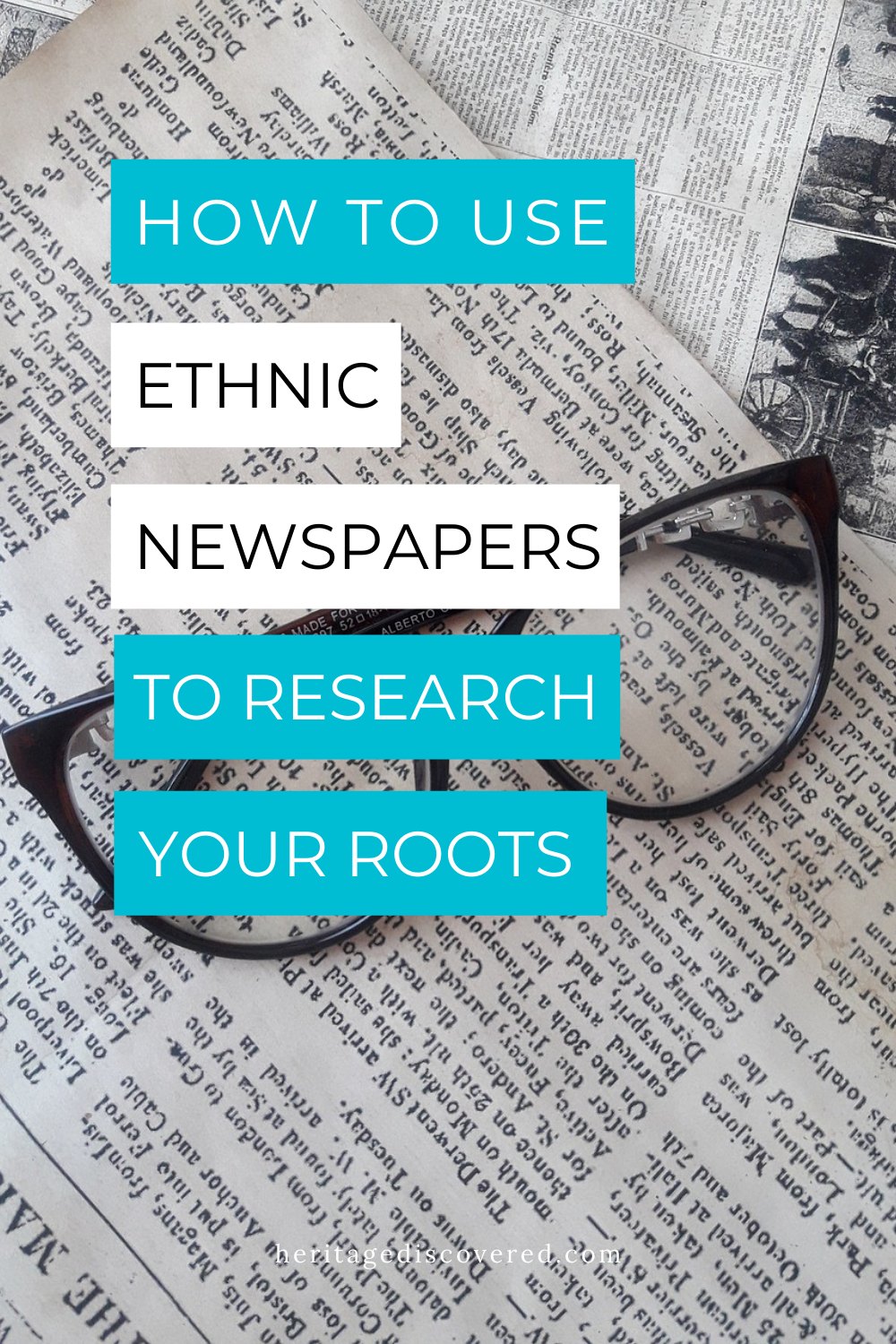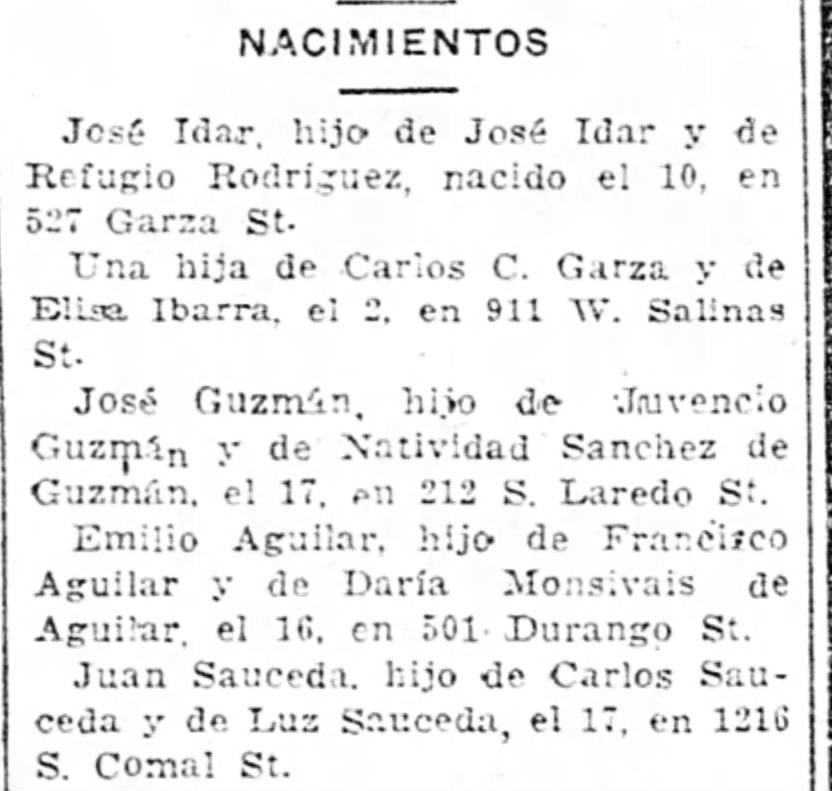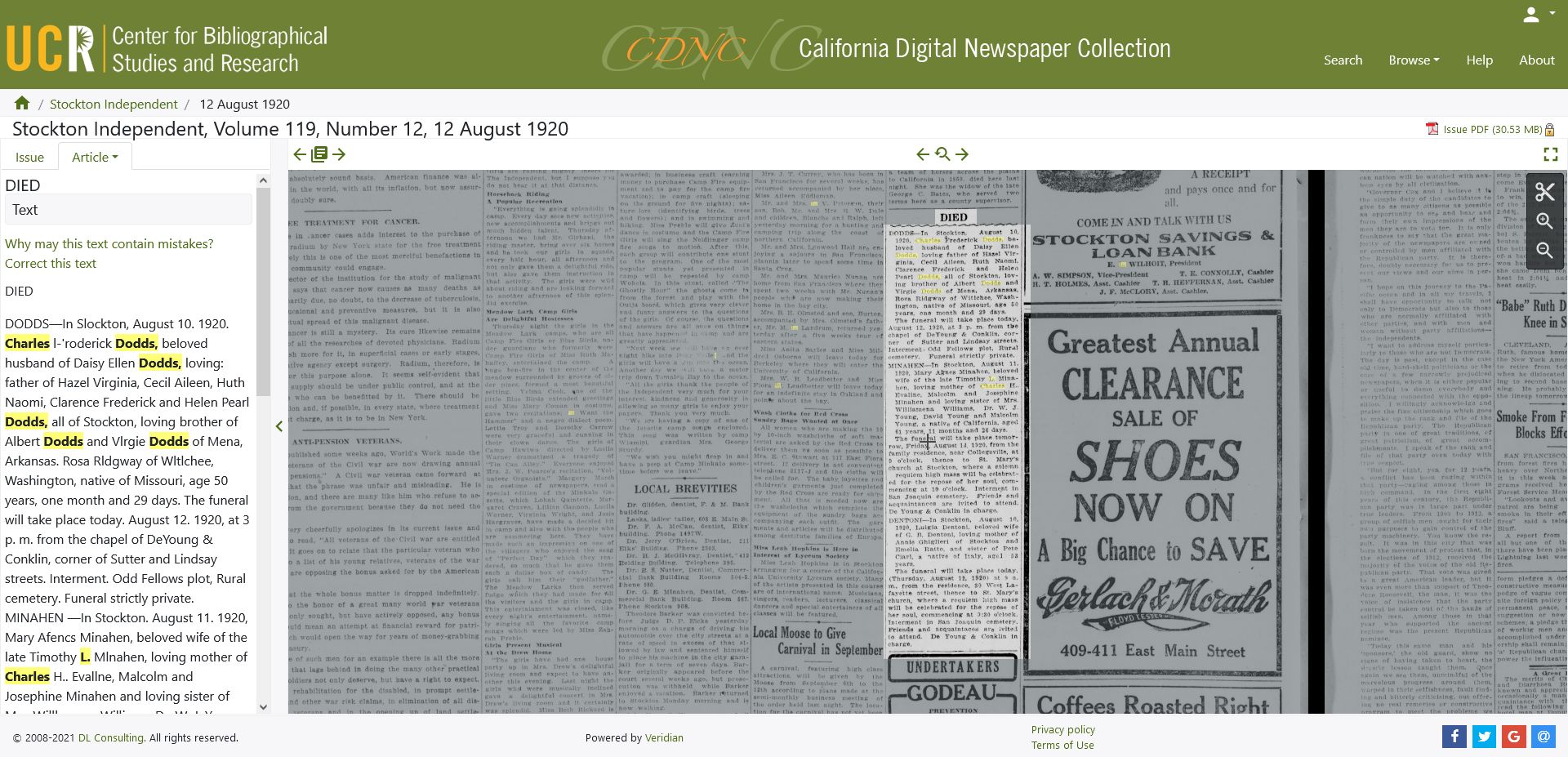Why Should You Use Ethnic Newspapers For Genealogy Research?
*This post may have affiliate links, which means I may receive commissions if you choose to purchase through links I provide (at no extra cost to you). All opinions remain my own.
In this post
The history of ethnic newspapers
Why ethnic papers mattered to our ancestors
Genealogical information in ethnic periodicals
Where to look for these resources
Seeing your ancestor mentioned in a newspaper is always a real treat. I’ve learned so much about my family from newspaper articles, from house fires to court cases, and even murder! And of course, more light-hearted topics like visits from out-of-town relatives and births.
But finding articles about my immigrant ancestors has been a little harder. Sometimes traditional press overlooked newcomers and there isn’t as much you can dig up about them.
If you’ve had a challenge discovering articles about your ancestors who came from another country or belonged to a non-White community, ethnic newspapers may be just the genealogy resource you need.
In this article, I’ll share how to find and use ethnic and foreign-language newspapers to learn more about your family.
Related posts:
10 Terrific Resources For Identifying Your Immigrant Ancestor’s Hometown
Where To Find Records For Emigrants To The United States
What Are Naturalization Records And How Can They Support Your Research?
11 of the Best Websites for Free Ship Passenger Lists
How To Save Hours Of Time With These 8 Translation Tools For Genealogy
History of ethnic newspapers in the US
The US began publishing newspapers in 1619. These gradually grew in size, circulation numbers, and the number of periodicals being printed. By the 1830s, the price had gone down enough that the average working person could afford to pick up a copy daily. Plus, more papers started covering current news, rather than only political stories, which broadened readership.
It was around this time that the printing of ethnic newspapers began picking up steam, as well.
German immigrants were the early driving force for the publishing of foreign-language papers. The first was the short-lived Die Philadelphische Zeitung, launched in 1732 by Benjamin Franklin.
By 1802, several German periodicals were being produced in Pennsylvania. And by the 1880s, the press was turning out 800 German papers, with the numbers continuing to grow through the end of the century.
Those written in Spanish were introduced about the same time, with El Misisipí and El Mensagero Luisianés created in Louisiana in 1808 and 1809, respectively. By the late 19th century, Spanish language papers were in California, Arizona, New Mexico, and Colorado. Some, like the St. Johns Herald and Apache News (St. Johns, Arizona), were bilingual.
The first Asian language newspaper is believed to be the Golden Hills’ News, published each week in Chinese in San Francisco beginning in 1854. Soon after, about 25 Chinese publications were being put out in eight cities.
Not all papers were in foreign languages, though. Four free African Americans created Freedom’s Journal in 1827. Another, The North Star, was established in 1847 as an anti-slavery periodical and was edited by Frederick Douglass.
Publications serving the Jewish community arose in the mid-19th century. These were published in English, Yiddish, Hebrew, Ladino, and other languages. Examples are the Israelite, established in 1854, and the Jewish Exponent, which launched in Philadelphia in 1887.
There were also ones for the Irish and Native American communities. The Western Star, and Harp of Erin (1812) was a resource for Irish, while The Cherokee Phoenix (1828) covered stories in the Cherokee language.
Historical newspapers in the US can be found in many languages, including Norwegian, Lithuanian, French, Italian, Japanese, Syrian, and more.
Related posts:
What To Know About Alien Registration Files And Where To Find Them
What you need to know about Mexican civil registration records
How To Add More Details To Your Family Tree With Passport Applications
Why multicultural newspapers were important to our ancestors
Foreign-language and multicultural newspapers were an important resource to our ancestors.
These helped them maintain their identity after immigrating or as part of a marginalized community, such as African Americans. People who immigrated wanted to keep up with the news from their homeland, in a language they were fluent in.
Reading these shows us how these groups reported on themselves and their culture and how they maintained their racial or national identity within that of the larger community around them.
Immigrants were often discriminated against and didn’t appear in the traditional press. There’s a better chance of discovering an article about them by searching the local ethnic papers.
Related posts:
9 French Canadian Genealogy Books to Energize Your Research
What is a nom dit and why did my French Canadian ancestor have one?
14 Books That Will Help Your Irish Genealogy Research
Why I Love The National Library of Ireland Parish Registers Collection And Why You Will Too
Genealogical information in ethnic papers
You’ll come across the same kind of information in ethnic periodicals as in mainstream ones to help your genealogy research:
Obituaries. These may be more detailed than in a regular local paper, which often ran only very short notices.
Advertisements
Birth and marriage notices
Local news columns
Other news articles
This clipping from La Prensa lists the recent births. And as a bonus, also gives the family’s address.
Image source: “Nacimientos”, La Prensa, (San Antonio, Texas), 23 December 1922, p. 8, col. 4; image copy, Newspapers.com (https://www.newspapers.com : 27 October 2021).
But you can also find more unique features like:
Passenger lists
Articles specific to the community, such as fraternal club meetings or where to celebrate certain holidays, like Rosh Hashanah
Where to go to church
News about their home country
“Missing friend” notices, like the Irish immigrant ads in the Boston Pilot
You not only have a good chance of seeing your ancestor’s name, but you can learn a lot about the community from reading through these publications.
Once you’ve found your relatives in a newspaper article, be sure to thoroughly analyze it to gather every bit of information from it that you can.
Related posts:
10 Black Genealogy Resources You Need To Know
How to: Koseki Records and Japanese Genealogy Research
4 Great Genealogy Resources For US Canada Border Crossing Records
Where to look for these newspapers
There are a lot of places you can look for ethnic papers. Some are still only accessible on microfilm, but many are digitized and are available on different databases.
A few of those databases are easier to use than others. Some are too expensive for the average person to buy a subscription, but there are still ways to access them.
Here are a few major sources that you can start with:
1) The Library of Congress’ Chronicling America. This site has printings from 1777-1963, including African American, Jewish, and foreign-language periodicals.
2) GenealogyBank has over 13,000 city and town newspapers, 95% of which are exclusive to them. They have organized these by cultural collections, including Irish, German, and others.
3) Internet Archive has publications in many languages, including Italian, Chinese, Dutch, and Arabic. These are not searchable like other resources, but are still a handy resource.
4) Readex and ProQuest Historical Newspapers. Readex has over 500 titles for Hispanic and African Americans, plus other groups from 1799 to the 1990s. ProQuest has African American newspapers and others. Try using your local public or university library to access these databases.
5) Newspapers.com. Finding cultural or foreign periodicals on this site can be harder than on others. But, they do have publications such as La Prensa and the Cherokee Phoenix.
6) Historical societies. Some, like the Minnesota Historical Society, have digitized some local foreign-language papers
Tips on how to use ethnic and foreign-language newspapers
So, you’ve found an article mentioning your ancestor in an ethnic paper, which is great. But it’s in another language, which is less great.
Or maybe you found the local paper, but the search function doesn’t work well because of the printed language, like Fraktur.
Now what?
Here are a few tips to help you navigate these sources, especially those in other languages, so you can find your ancestors and translate any articles.
1) Try Deepl for translating words. This often works better than Google Translate because it can handle historical words.
2) Use genealogical word lists to identify common words. FamilySearch has many great glossaries on its wiki.
3) Be aware of spelling and grammar issues unique to that language. For example, For example, in German, p and b, and v and f are interchangeable. In Swedish, g and k are interchangeable, as are j, g, gj, hj, lj, and dj. Search for terms by all the possible variations.
4) Use OCR text results to your advantage. Sometimes the Optical Character Recognition (OCR) software can go wonky, especially with a script like German Fraktur or letters that don’t exist in English, such as ö.
See what patterns the OCR has in misreading letters, such as y and v, and try searching variations of those, like Vates instead of Yates.
Some sites show you the OCR text results along with the image. In these cases, you can use this text to spot patterns in misread OCR text, as well as copy and paste the text into a translation program if it’s in another language.
In the example below, you can see that “i” is often misread as “l”. In this case, I’d search for names like “Vlrgie” and “Evallne” to see if that improves my results.
Image source: "Died," Stockton Independent (Stockton, CA), 12 August 1920, p. , col. 5; image copy, California Digital Newspaper Collection (https://cdnc.ucr.edu/ : 27 October 2021).
5) Analyze what you’ve found. It can be easy to not read through the whole article in our excitement to find our ancestor in an article. Carefully read through the article to glean as much information as you can from it.
A good general guide to searching newspapers is The Family Tree Historical Newspapers Guide: How to Find Your Ancestors in Archived Newspapers by James M. Beidler.
If this post was helpful, please consider “buying me a coffee”. Tips through Ko-Fi help me create more content like this for you! Thank you for supporting my small business!
Final thoughts
Seeking out multicultural newspapers for your ancestors may lead you to information that you’d never learn about them in a regular paper. You can uncover detailed obituaries or even find them on a passenger list. These are especially helpful for ancestors who came from another country.
Although searching for and using foreign-language periodicals may take a little more practice and time than those in English, it can be worth the effort.
Once you’ve found your family in an ethnic paper article, make sure you carefully analyze it and gather all the juicy hints in it with a newspaper research worksheet.
Have you ever tried searching ethnic papers for your family?
Want more content like this? Get updates on the latest posts and more from Heritage Discovered straight to your inbox.




